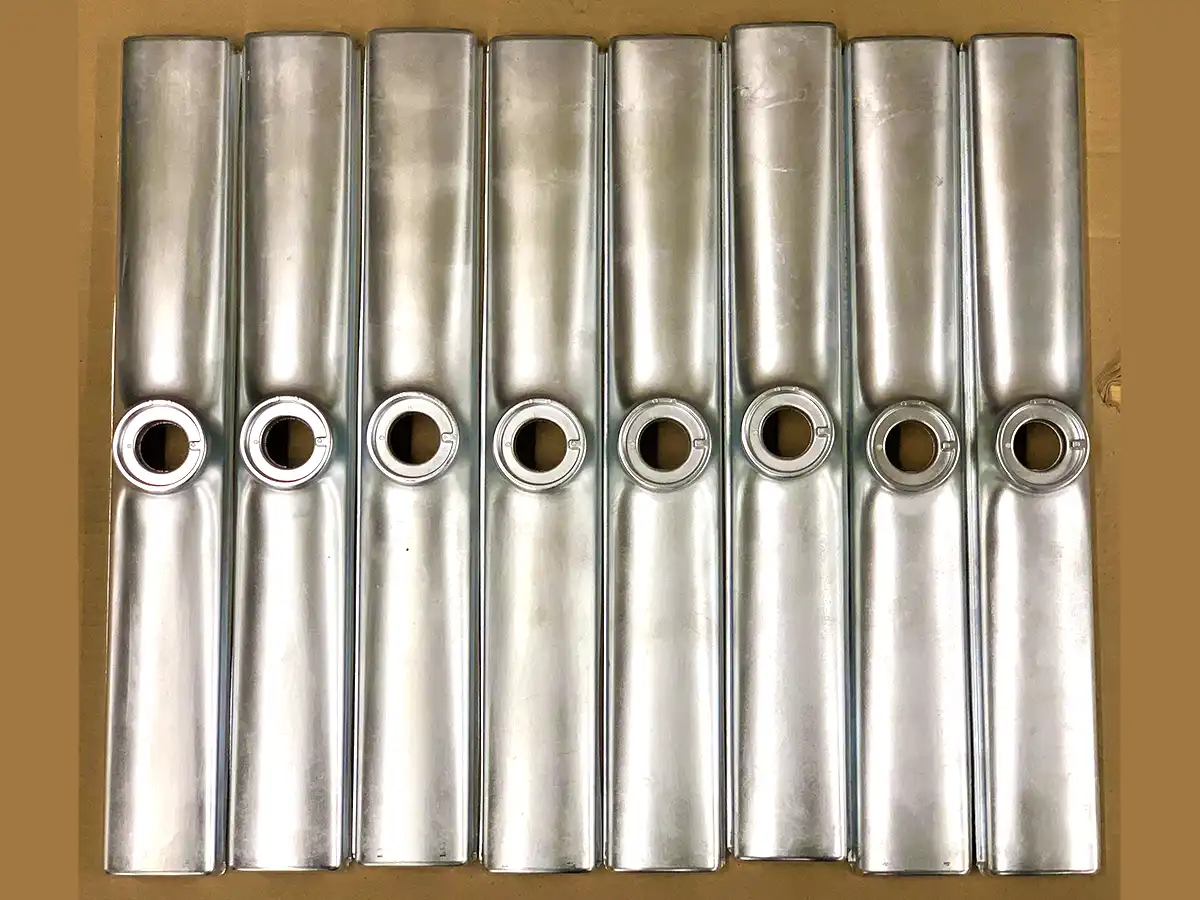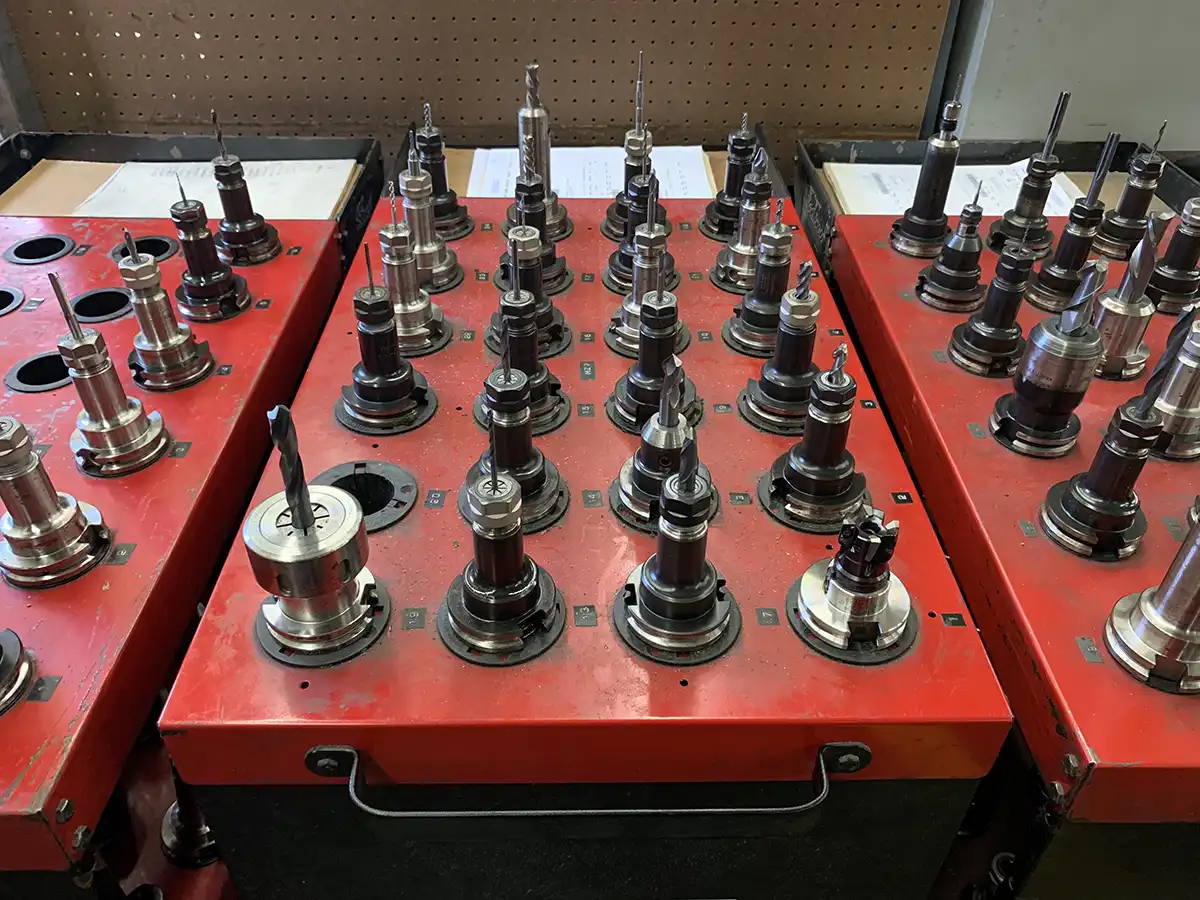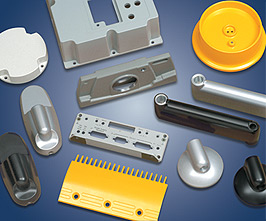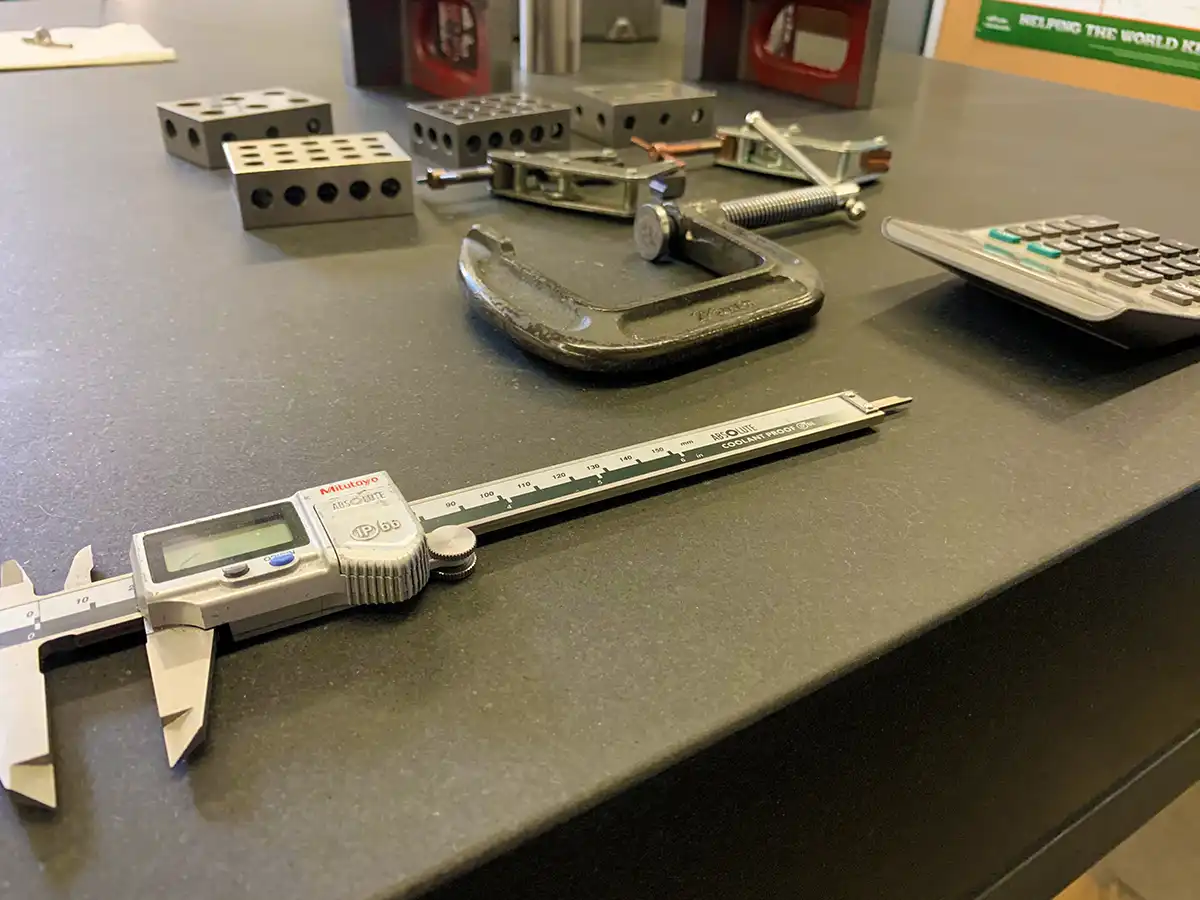Secondary Machining & Finishing
Fast and Economical Turnaround on Secondary Operations

Part of the Graphicast Advantage is that our process creates parts that require minimal secondary machining. This is why we can produce high-quality parts quickly. However, for those times that secondary machining is required, Graphicast has you covered. We have in-house high-speed CNC machining capabilities. That means we can quickly perform any necessary machining in a cost-effective manner.
Our integrated approach to secondary machining eliminates the delays and quality concerns associated with outsourcing these critical operations. By maintaining complete control over both primary casting and secondary operations, we ensure consistent quality, faster delivery times, and reduced total acquisition costs for your precision components. Whether you need simple deburring or complex precision finishing, our experienced team and advanced equipment deliver the results you need.
Want to minimize secondary machining requirements? Our engineering team can review your designs and suggest modifications that reduce post-casting operations while maintaining part functionality.

Minimizing Secondary Operations Through Superior Casting
The foundation of efficient secondary machining begins with superior primary processes. Our graphite permanent mold casting technology produces parts with exceptional surface finishes and dimensional accuracy, significantly reducing the need for extensive secondary operations. This approach delivers multiple benefits that directly impact your bottom line.
When you choose Graphicast’s casting services, you’re selecting a process specifically engineered to minimize post-casting work. Our LTA™ casting technology creates net and near-net shape parts that often require only minimal finishing touches. The natural precision of our graphite molds allows us to incorporate complex geometries directly into the casting, eliminating many traditional machining steps. This means features like bosses, ribs, and even some threaded sections can be cast to near-final dimensions, requiring only light finishing passes rather than extensive material removal.
The economic advantages become clear when you consider the total manufacturing cost. By reducing secondary machining requirements, we help you achieve faster throughput, lower tooling wear, reduced machine time, and decreased material waste. These savings compound across production runs, making our approach particularly advantageous for low- to medium-volume production, where setup costs significantly impact per-piece pricing.

In-House Secondary Machining Capabilities
When secondary machining is necessary, our comprehensive in-house capabilities ensure a seamless transition from casting to finished part. Our facility maintains the same high standards for secondary operations as we do for primary casting, with all work performed under our ISO 9001:2015 quality management system.
Our secondary machining capabilities include:
- High-speed CNC milling for precision features
- Drilling and tapping operations with positional accuracy of ±0.002″
- Surface finishing to 32 Ra or better
- Deburring and edge breaking to print specifications
- Thread milling and tapping in various sizes
- Precision boring for tight tolerance holes
The integration of these capabilities within our facility means your parts never leave our quality-controlled environment. This single-source approach eliminates the risks associated with shipping parts between vendors, reduces lead times, and ensures consistent quality throughout the manufacturing process. Our experienced machinists understand the unique properties of ZA-12 alloy and other materials, applying the optimal cutting parameters and tooling strategies for each application.
Advanced Equipment for Precision Secondary Operations
Our secondary machining operations utilize the same state-of-the-art equipment that powers our general CNC machining services. With seven CNC machining centers, including specialized units for specific materials, we maintain the capacity and flexibility to handle diverse secondary operation requirements without disrupting primary production schedules.
The Haas VF-series machines, equipped with internal probes and rotary tables, excel at the precision work often required in secondary operations. These machines can perform multiple operations in a single setup, maintaining critical relationships between features while minimizing handling and reducing the potential for error. Our Mazak 410B centers provide additional capacity for larger parts or higher volume secondary operation requirements.
Quality verification remains paramount throughout secondary machining. Our Mitutoyo CRTPM574 CMM and Hexagon Global S automated CMM system verify dimensional accuracy at every stage, while TESA electronic height gauges provide rapid checks during production. This comprehensive measurement capability ensures that secondary operations maintain the tight tolerances your applications demand, with surface-to-surface accuracy of ±0.0005″ for dimensions under 6 inches.

Finishing and Coating Services
Graphicast parts can be finished using the same processes and materials as those recommended for zinc die castings, providing extensive options for surface treatments and protective coatings. Our comprehensive finishing capabilities ensure your parts meet both functional and aesthetic requirements.
Coating options include any commercial paint or powder coating system. A zinc phosphate treatment or wash primer is used under wet paints to ensure optimal adhesion and durability. For corrosion resistance, zinc chromate can be applied, with or without a decorative topcoat. Acrylic or epoxy electrocoating can also be used to simulate black anodized aluminum, providing an attractive, durable finish that meets demanding environmental requirements.
Our complete finishing services include:
- Tumbling and vibratory finishing with plastic or ceramic media
- Chromate conversion coatings for corrosion resistance
- Powder coating in various colors and textures
- Wet paint application with primer systems
- E-coating for uniform coverage and protection
- Cerakote application for extreme durability
These finishing options integrate seamlessly with our secondary machining operations, enabling us to deliver fully processed parts that are ready for assembly or end use. Our established relationships with specialized coating vendors ensure consistent quality and rapid turnaround when specific finishes require external processing.
Single-Source Advantages for Complete Part Production
The integration of casting, secondary machining, and finishing services under one roof provides significant advantages for your supply chain management. This single-source approach eliminates the complexity of coordinating multiple vendors, reduces administrative overhead, and ensures accountability throughout the manufacturing process.
When you partner with Graphicast for secondary operations, you benefit from streamlined communication with a single point of contact who understands your entire project. This simplified coordination reduces the potential for miscommunication and ensures that any design changes or quality concerns are addressed immediately. Our project managers oversee your parts from initial casting through final inspection, maintaining consistent quality standards at every step.
The economic benefits of single-source manufacturing extend beyond simple convenience. By eliminating inter-vendor shipping, markup layers, and coordination delays, we reduce your total costs while improving delivery reliability. This integrated approach particularly benefits low to medium-volume production, where the overhead of managing multiple suppliers can significantly impact project economics.

Quality Assurance Throughout Secondary Operations
Every secondary machining operation at Graphicast operates under our comprehensive ISO 9001:2015 quality management system. This certification, with registration number 951 19 4958, ensures that the same rigorous quality standards apply whether we’re performing primary casting or precision finishing operations.
Our quality assurance protocol for secondary operations includes first article inspection for all new setups, in-process verification at defined intervals, and final inspection against customer specifications. We maintain complete traceability throughout the process, documenting tool changes, measurement results, and any process adjustments. This detailed record-keeping provides confidence in part quality and supports continuous improvement initiatives.
The combination of advanced measurement equipment, experienced operators, and systematic quality procedures ensures that your parts consistently meet specifications. Whether you require basic deburring or complex precision machining, our secondary operations deliver the quality and reliability your applications demand.
